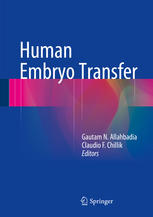

Most ebook files are in PDF format, so you can easily read them using various software such as Foxit Reader or directly on the Google Chrome browser.
Some ebook files are released by publishers in other formats such as .awz, .mobi, .epub, .fb2, etc. You may need to install specific software to read these formats on mobile/PC, such as Calibre.
Please read the tutorial at this link: https://ebookbell.com/faq
We offer FREE conversion to the popular formats you request; however, this may take some time. Therefore, right after payment, please email us, and we will try to provide the service as quickly as possible.
For some exceptional file formats or broken links (if any), please refrain from opening any disputes. Instead, email us first, and we will try to assist within a maximum of 6 hours.
EbookBell Team

0.0
0 reviewsThis concise work on embryo transfer is yet another contribution to the persevering effort to disseminate latest information on the science and skill of performing a traumatic and successful embryo transfer. It is the most critical culmination of the assisted reproductive technology (ART) stimulation cycle, and a rate-limiting step in dictating the success of treatment. The well-worded chapters draw the reader’s attention to significant aspects before initiating the actual embryo transfer, such as possible causes of failure at the embryo transfer stage, uterine evaluation, mock embryo transfer (ET), experience of the physician, and the use of ultrasound-guidance to monitor ET. The protocol for difficult transfers, variables that affect the success of ET, and the influence of the catheter used for ET have also been dealt with. The unique feature of this book is its pragmatic approach that can translate into solutions to the numerous frustrating ART failures that more often than not, may be attributed to an inefficient ET procedure. It helps the reader understand the integrity of embryo transfer, unravel its obvious simplicity and bridge the success between the several steps of ART. By highlighting the impeding problems associated with ET procedure and providing valid, scientific solutions, this stimulating edition will help the readers improve the ART success rates in their clinical practice.